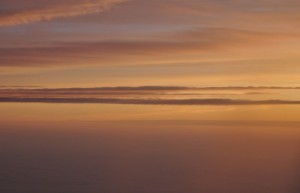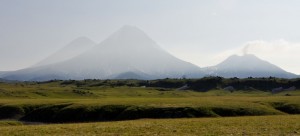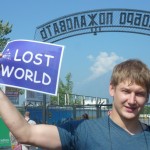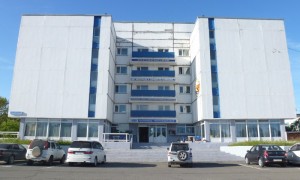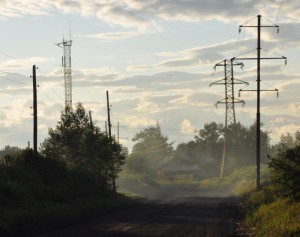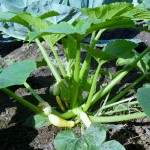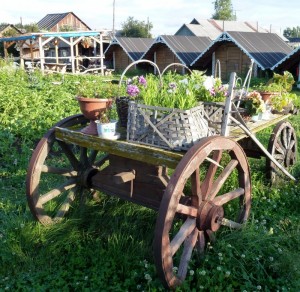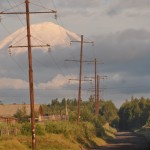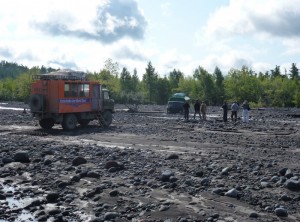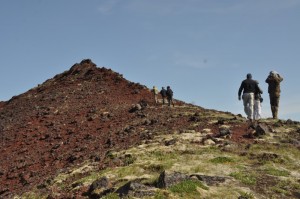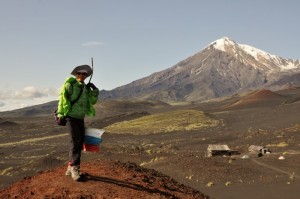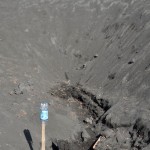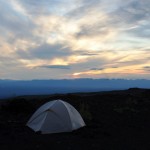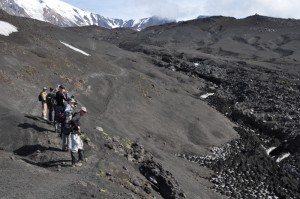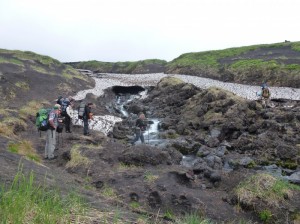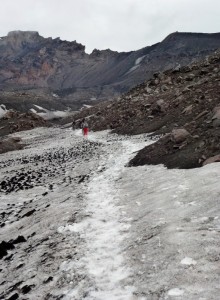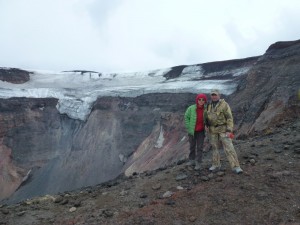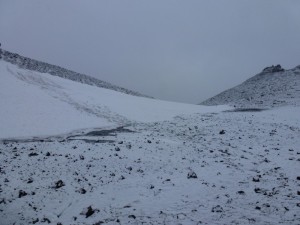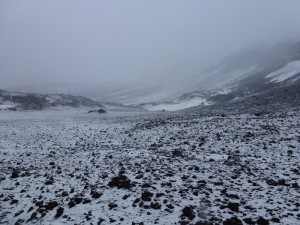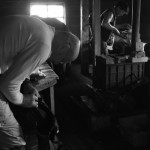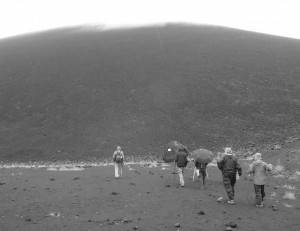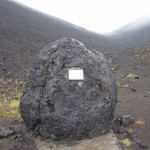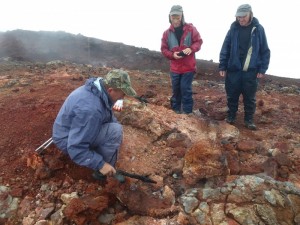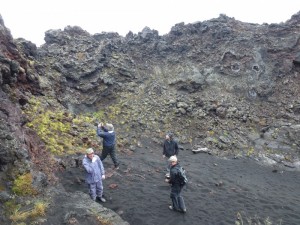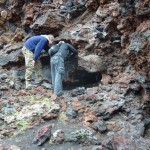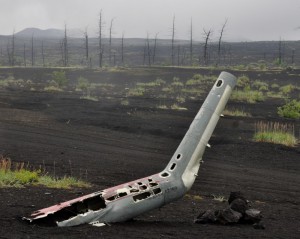The 1,250-long Kamchatka Peninsula situated at the easternmost part of Russia on the Pacific Ring of Fire is world famous for its volcanoes, bears, intact wilderness and biodiversity. The peninsula has only been open to foreigners since 1991 and most of the land has remained pristine and untouched by modernization. Unfortunately, bad weather nearly ruined my holiday right from the start. I joined a 10-day trek to see volcanoes in the Kluchevskoy National Park and a 6-day helicopter trip to see bears in the South Kamchatka Federal Sanctuary and some volcanoes in the South Kamchatka National Park. But I have not seen Kamchatka at its best and may return one day.
Kamchatka (GMT +12)
Russia is the largest country in the world and the remote Russian Far East was not explored till the 17th century. Ivan Moskvitin was the first Russian explorer to reach the Sea of Okhotsk in 1639 and the Kamchatka Peninsula sitting between the Okhotsk Sea and the Pacific Ocean was finally explored from the north in 1651. Danish explorer Vitrus Bering’s second Kamchatka expedition in the service of the Russian navy began the final opening of Kamchatka. He founded Petropavlovsk-Kamchatsky (PKC) in 1740 when his two boats, St Peter and St Paul arrived at the bay.
During the Crimean War which main battle ground took place in the Crimean Peninsula in 1854, the French and British attacked PKC but failed to take it. The peninsula’s strategic importance as a transit centre for traders and explorers declined after the sale of Alaska to the United States in 1867. It remained closed to foreigners till 1990.
Geography and the People
The Peninsula has an area of about 270,000 square kilometres and a population of about 400,000.It is world famous for its volcanoes, geysers, bears, salmon and bio-diversity. The Kamchatka River and the surrounding central valley are flanked by large volcanic belts. Klyuchevskaya Sopka at 4750m is the highest active volcano in the Northern Hemisphere. Kronotsky is a perfect cone and most striking. Three volcanoes namely Koryaksky (3456m), Avachinsky (2751m) and Kozelsky (2189m) are visible from PKC.
The vast majority of the inhabitants now are Russians. More than half of the population lives in the capital PKC and nearby Yelizovo. The indigenous peoples including the Koryaks, Itelmens and Evens scatter in settlements outside the main cities. There are only two principal roads one from Bolsheretsk to PKC and another from this road up the central valley to Ust-Kamchatsk.
Climate and Volcanoes
The Peninsula is part of the Pacific Ring of Fire with 29 active volcanoes and some 160 extinct volcanoes that have left their mark on the land. The Kluchevskoy Volcanic Group is the largest conglomeration of volcanoes on the peninsula covering an area of 6,000 square kilometres with 14 volcanoes ranging from 1,945m to 4,750m.
Kamchatka has a subarctic climate generally while the northern end has a polar climate. It is covered in snow from October to late May. The whole peninsula has been named as a national park and six protected areas have been included in the “Volcanoes of Kamchatka” World Heritage Site. These include the Kronostsky Nature Reserve, the South Kamchatka Federal Sanctuary and four regional nature parks – Nalychevo, Bystrinsky, Kluchevskoy and South Kamchatka.
My trip plan
There is no direct flight from Hong Kong to PKC. I decided to take a Dragon Air direct flight to Beijing followed by a Siberian Airline (S7)’s 5-hour flight to PKC. I would leave Hong Kong on July 21 and arrive in PKC on July 22 to join a 14-day trip beginning on July 23 followed by a 9-day trip to the South Kamchatka Federal Sanctuary and the South Kamchatka National Park from August 5 to 13.
July 21, Saturday: Hong Kong – Beijing
My flight with the Dragon Air at 4pm would arrive in Beijing at 7pm and the S7 flight would depart at 1:50am on July 22. I learnt about the bad weather in Beijing and got worried. But there was nothing I could do.
Boarding was delayed till 4:30pm. But we stayed inside the plane for four hours till we were arranged to go back to wait at the lounge at 9pm. It was amazing that most of the passengers remained good-tempered and well-mannered which was a contrast to the experience I had at the Guangzhou airport on June 23.
As I envisaged problems in catching my S7 flight in time, I asked the cabin staff for assistance. One ground staff said they would try to contact/cable the S7 staff to inform them of my situation (I gather that this had not been done possibly owing to the chaotic situation).
We were given a HK$100-coupon for food. I had a nice bowl of won-ton soup before boarding the plane at 11:30pm. Finally the plane had approval from the Beijing air traffic control to take off after midnight.
July 22, Sunday: Beijing
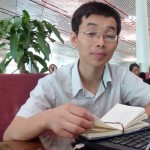
Both of us were hungry and tired. I invited him for lunch and we spent almost two hours in a Thai restaurant to sort out my ticket. Finally, he found the Aeroflot ticket to PKC being offered for RMB6,580. I called Lawrence who immediately remitted the money to the travel agent which issued my e-ticket. Without the help of the kind young man and my brother Lawrence, I would never be able to find a quick solution or might have to pay RMB7,500 instead of RMB6,580 for the same flight.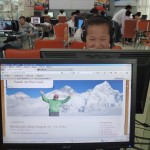
Day 1 (July 23, Nonday): Beijing – Kamchatka via Khabarovsk My plane landed in Khabarovsk before 7am (local time) and I arrived at the S7 counter at the domestic terminal just 20 minutes before the counter closed.There were no more mishaps and I was met by Leo, the interpreter on arrival at the PKC airport. As the weather was fine, I could also see Koryaksky and Avachinsky.